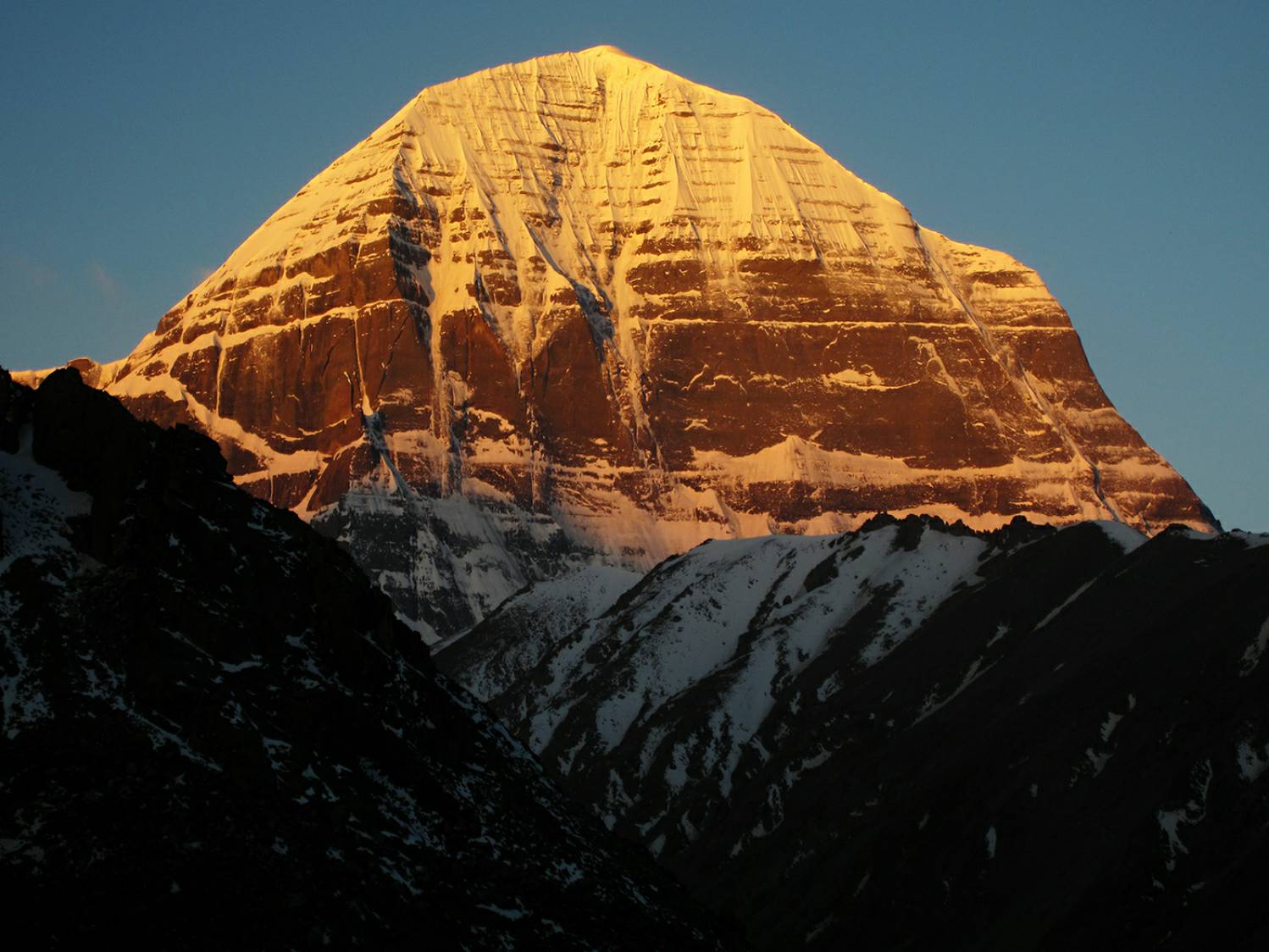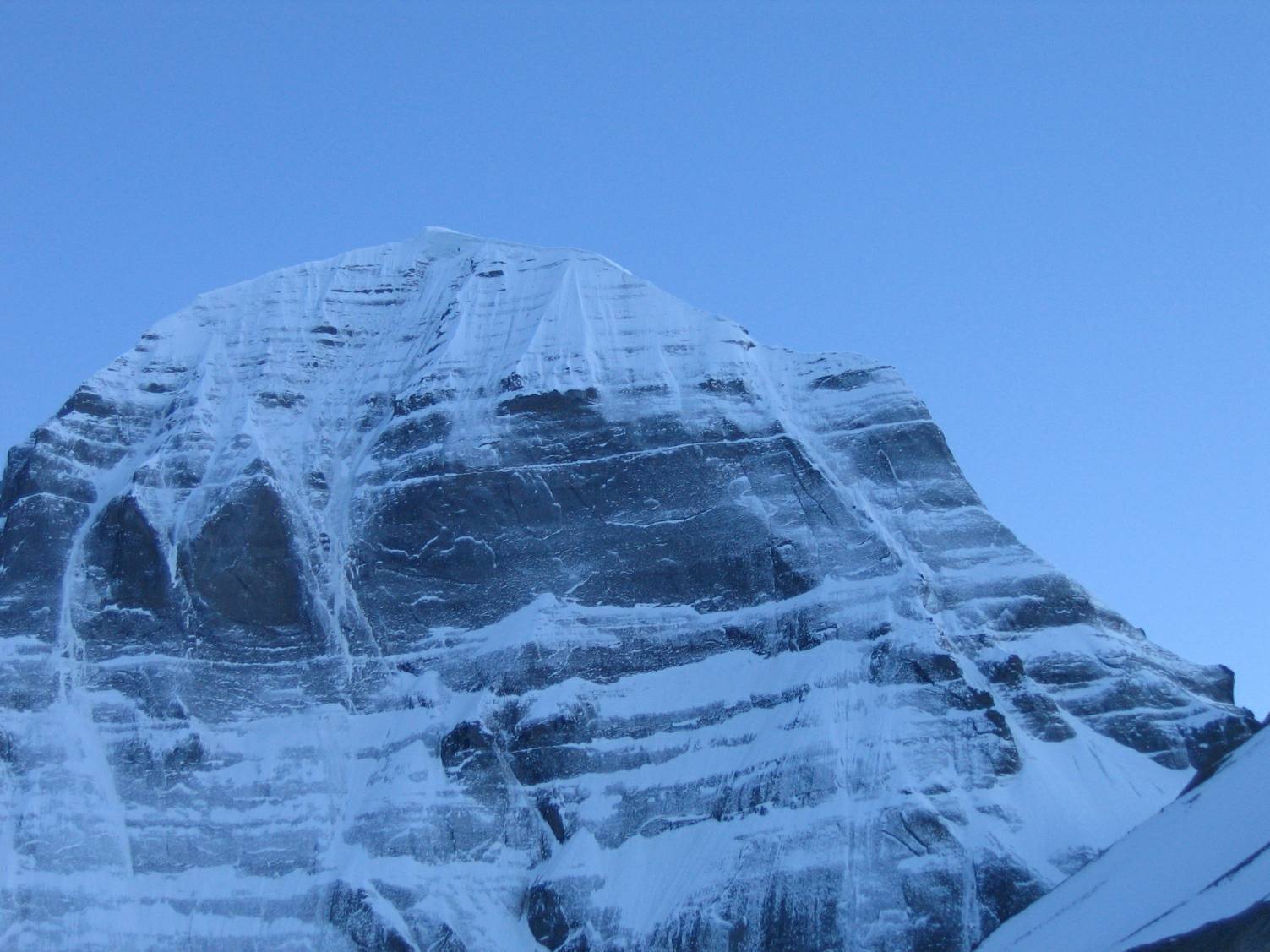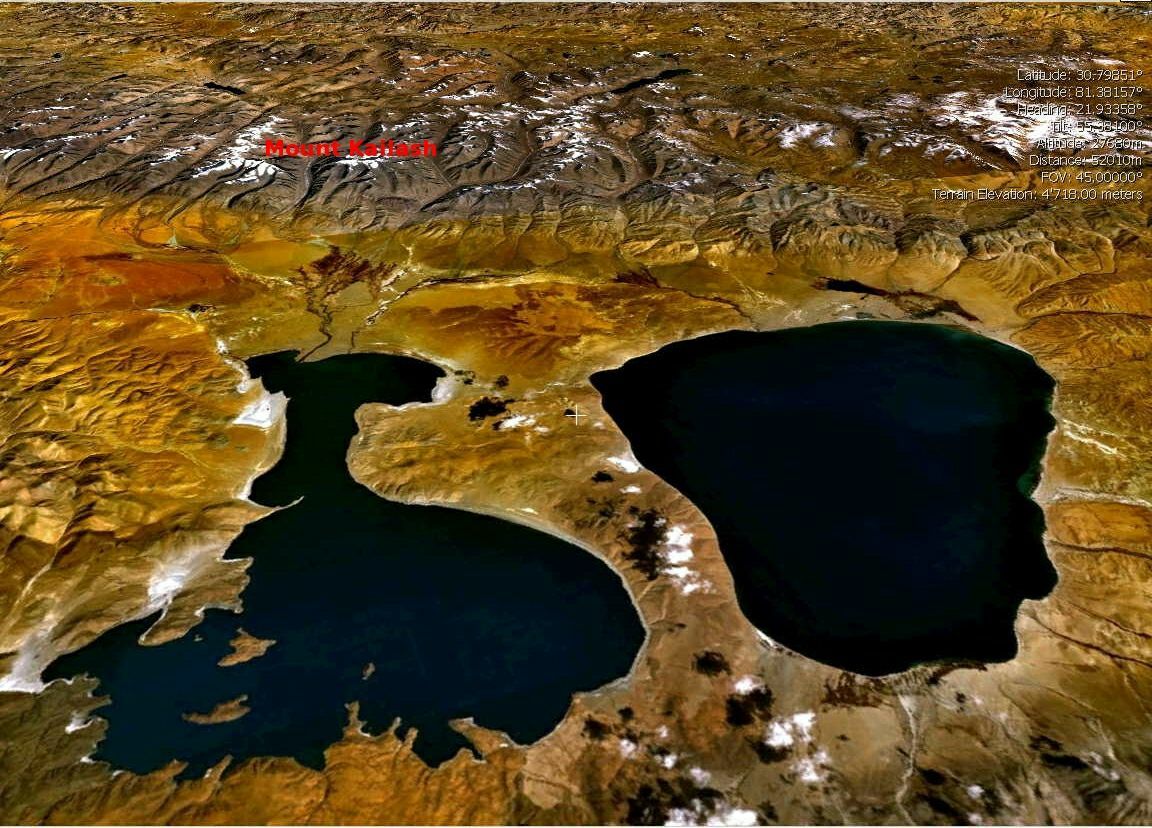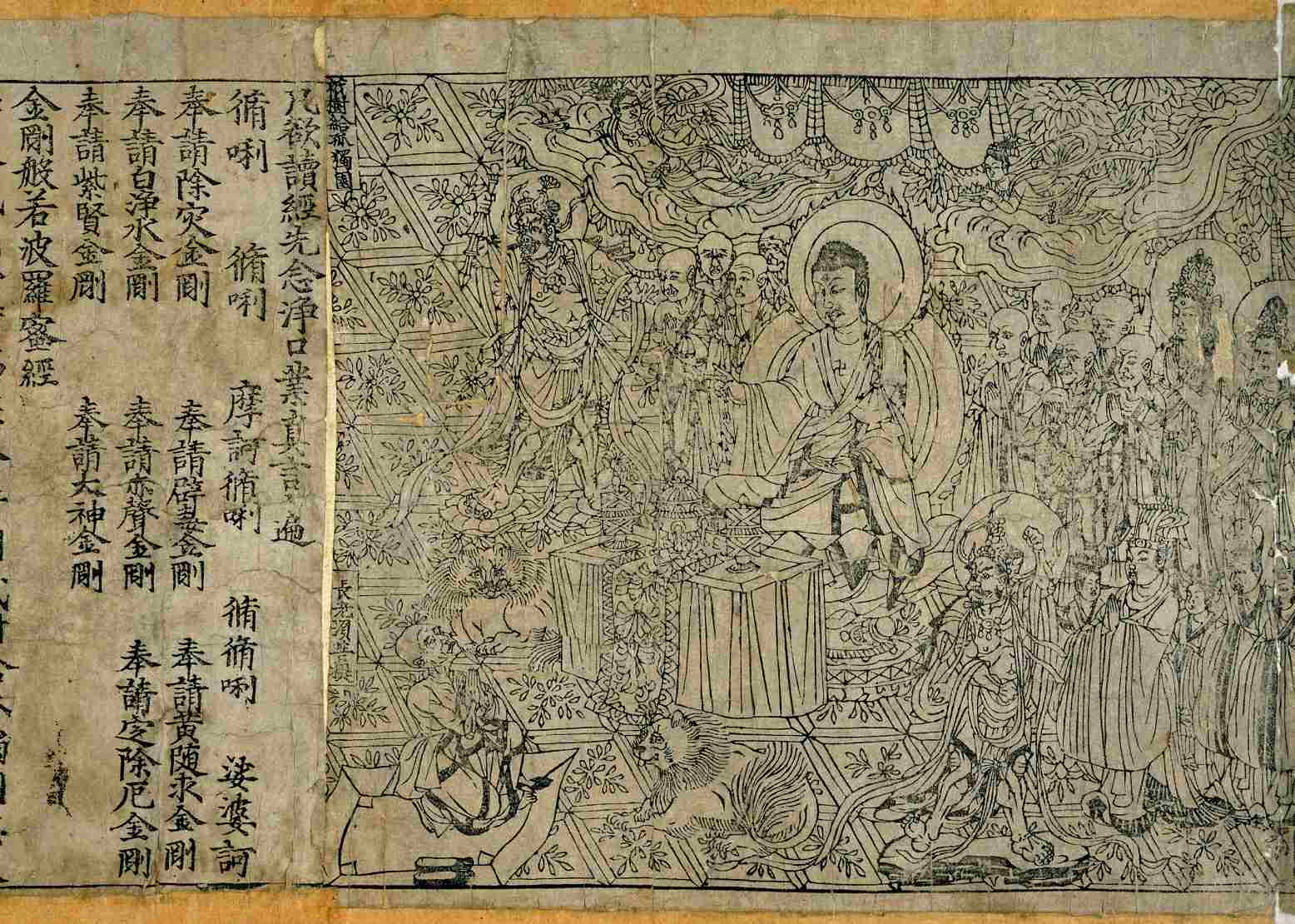Shrouded in lore and mysticism of the unknown, Mount Kailash remains an unexplained phenomenon with several layers adding to its mystery. Located in Western Tibet, Mount Kailash, over the centuries, has garnered interest from several parts of the world and many different disciplines. At a time when humans and technology itch to dominate nature, Mount Kailash remains a riddle that is yet to be scaled to date. The people and alpinists who have dared to try have met with accidents.

Axis Mundi, the centre of the universe, the navel of the world, the world pillar, Kang Tisé or Kang Rinpoche (the ‘Precious Jewel of Snow’ in Tibetan), Meru (or Sumeru), Swastika Mountain, Mt. Astapada, Mt. Kangrinboge (the Chinese name) – all these names belong to the holiest and most mysterious mountain in the world. Kailas mountain rises to an altitude of 6714 meters and is smaller than the nearby mountains in the Himalayan range but its speciality lies not in its height but in its mysterious shape and radio-active energies by pyramids around it. The area around this great mountain is the source of four life-giving rivers; the Indus, Brahmaputra, Surlej and Karnali, which is a major tributary of India’s sacred Ganges, begin here.
As a spiritual harbinger of five religions, namely Hinduism, Taoism, Buddhism, Jainism, and the native Tibetan religion of Bőn, Mount Kailash is recognized as a sacred mountain, unreachable and holy. Pilgrims were known to trek around the mountain’s base in a circular path as a sacred ritual, which was later stopped by the Chinese government, keeping in mind the religious sentiments attached.
There must be existence of the super-natural in whatever form – higher intelligence, power, or energy. This interest remains strong to this day in many countries, to find this axis Mundi, the most powerful place, the highest power, or the hidden intelligence in whatever form it exists if indeed it does.
Mystery of Mount Kailash’s geology: man-made pyramid?

Nor should one ignore recent Russian studies of Tibet and the Kailas range, in particular, the results of which, if true, could radically alter our thinking on the growth of civilizations. One of the ideas the Russians have put forward is that Mt. Kailas could be a vast, human-built pyramid, the centre of an entire complex of smaller pyramids, a hundred in total. This complex, moreover, might be the centre of a worldwide system connecting other monuments or sites where paranormal phenomena have been observed.
The idea of the pyramid in this region is not new. It goes back to the timeless Sanskrit epic of the Ramayana. Since then, numerous travellers, especially at the beginning of the 20th century, have expressed the view that Mount Kailas is too perfect to be a natural phenomenon, or at any rate, give the appearance of human intervention.
The Russian Ophthalmologist, Dr Ernst Muldashev, in 1999, first came out with the theory that Mount Kailash is a human-made pyramid. According to him and his team, Mount Kailash is connected directly to the pyramids of Giza and Teotihuacan. Muldashev has, in detail, mentioned about the strange voices and occurrences that he and his team experienced while near Mount Kailash, like the sounds of stone falling from inside the mountain.
Looking inwards, Mohan Bhatt, a Sanskrit scholar claims that Ramayana also mentions Mount Kailash to be a pyramid, and the ancient texts reveal it to be a “cosmic axis.” Moreover, it is known as ‘Axis Mundi’ or the centre of the world, according to some Russian and American scientists. It is allegedly connected to other monuments spanning the globe, for example, Stonehenge, which is 6666 km away from the peak of Mount Kailash.

Several theories have emerged regarding the two lakes surrounding the foot of Mount Kailash, namely Mansarovar Tal and Rakshas Tal. The intriguing thing that comes up is that Mansarovar Tal is round-shaped, resembling the sun, whereas Rakshas Tal takes the shape of a crescent moon, depicting the energies of good and evil. Furthermore, despite the proximity of both the lakes, Mansarovar is a fresh-water lake, and Rakshas is a saltwater lake, adding to the mystery of this majestic mountain.
An ancient nuclear power plant
The power of imagination comes in when the unexplained needs an explanation, and such is the case with the Indus Valley Civilisation. Mohenjodaro, a probable metropolis of IVC, has allegedly recorded radioactive ash and radioactive skeletal remains, which has posed a rather wondrous question, where did the nuclear radiation emanate from?
Ancient history theorists believe that there was nuclear radiation in Mohenjodaro, which caused widespread annihilation of the people, perhaps hinting at a radiation event like a nuclear blast or a nuclear meltdown. This theory stems from the need to ascertain a source of such nuclear emanation, which led experts to question the role of Mount Kailash. Philip Coppens theorizes that Mount Kailash, at 22,000 ft., has the potential to be a nuclear power plant.
Mount Kailash’s past has deeper roots in China, with details about the peak mentioned in Magao caves of Western China, which is 600 miles north of Mt. Kailash. These are hill-side dug caves and shrines where Buddhist monks stored scrolls and manuscripts, dating back to 500 BC-1500 AD.

In 1907, Aurel Stein from Hungary chanced upon a sealed room called ‘Cave of a Thousand Buddhas’ containing around 50,000 manuscripts in different languages, among which the ‘Diamond Sutra,’ the oldest printed manuscript, was found. Moreover, a 2nd century AD Buddhist diagram was found illustrating a ‘cosmic mountain’ known as Mount Meru, which was supposed to be a stairway connecting heaven and earth. This diagram caught a scientist’s attention from Northrop-Grumman, who designs military weapons for the government, and according to him, this Buddhist diagram of Mount Meru was a blueprint for a particle accelerator or a cyclotron, which was used in the “development of ‘A’ bomb for the Manhattan Project.”
According to Mongolian myths, certain extraterrestrial beings dwell around Mount Meru because of the energy that emanated from it, which probably kept them alive. According to some scholars, Mount Meru was considered to be Mount Kailash, which gave out raw, ‘technological’ energy and not only spiritual energy, which may have had nuclear power.
These theories give us a glimpse into the probable explanation of this enigma of a mountain, which has captured the interest of all people alike. Mount Kailash continues to baffle people with its strange nuances, and will presumably continue to do so. Such is its nature. Belief, after all, lies in the mind of the believer, so what you have to ask yourself is to believe or not to believe, that is the question.




